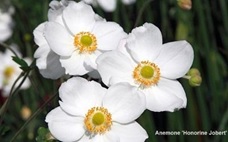The All-American Award Selections will shortly encompass perennials. It will be interesting to see what direction their choices take. For many years we have depended on the Perennial Plant Associations (PPA) for guidance in the choice of hardy, trouble free perennials.
This is a professional organization whose purpose is to evaluate perennials with the aim of educating gardeners in their usage and promoting their production and utilization. They have used the same procedure for choosing plants since the formation of the organization in 1900. The plants are nominated by the members of the PPA in the summer. Each member may nominate no more than two plants. The Perennial Plant of the Year committee goes through the nominations and on the basis of members expertize winnows the often up to 400 nominees down to the 3 or 4 perennials that are ultimately placed on the ballot.
The criteria for selection are:
1.Suitability for a wide range of climatic conditions
2.Low-maintenance requirements
3.Relative pest- and disease-resistance
4.Ready availability in the year of promotion
Attractiveness over multiple seasons.
Each individual member then votes, providing his expert opinion as to which plant best fulfills the above measurements.
The plants are not necessarily new varieties and this adds to the attractiveness of the selections. They are often varieties that are in a home gardener’s plant collection. Some of the selections over the past years are Geranium ‘Rozanne’ (perennial geranium), Nepeta ‘Walker’s Low’ (catmint), Athyrium niponicum ‘Pictum’ (Japanese painted fern), Phlox ‘David’ (the white one), and Calamagrostis x acutiflora ‘Karl Foerster’ (grass), Rudbeckia fulgida var. sulivantii ‘Goldsturm’ (black-eyed Susan), and Perovskia atriplicifolia (Russian sage). All of these are in the garden clubs plant collection and are grown in our collective beds and home gardens. The PPA quite often just verifies what we already know about plants.
The choice this year is Anemone ‘Honorine Jobert’. This is one of the fall blooming anemones (Anemone x hybrid). There are also spring blooming anemones and all belong to the family Ranunculaceae (buttercup.) ‘Honorine Jobert’ is a
naturally occurring white mutant of a pink anemone. The sport is so named because it was found in the garden of M. Jobert in France. The date was 1858 so this is by no means a new plant.
The 2”-3” flowers are white with frilly yellow stamens and chartreuse centers. They are held above the foliage on long slender stems. The swaying of these stems in the slightest breeze gives the anemones their common name of windflower.
The leaves are dark green, lobed and slightly hairy. They characteristically form a compact mound of 20”-24” in height. The flower stems can reach a height of 24”-48”.*
The plant spreads by rhizomes and will fill in an area quickly once it settles in. This plant is closely related to Anemone robustissima, another fall blooming anemone, which we have in our plant collection. It is a pink blooming plant and probably smaller than this one. It is somewhat difficult to get started especially from a small plant. It grows much better when transplanted as a clump. It apparently is also more successfully transplanted in the early spring.
‘Honorine Jobert’ is said to be tolerant of different kinds of soil including clay. It likes moisture but it will have a problem with root rot if the soil isn’t well drained. It prefers a semi-shady location but will grow in direct sunlight if sufficient moisture is provided. Deep shade will produce leggy flowers that will flop instead of sway in the breeze.
These plants are allegedly bee and butterfly friendly but there is some doubt that this is the case. Most anemones do not produce nectar nor do they have the vibrant color that attracts bees and butterflies. I can find no reliable source that attests to the fact that the hybrids are nectar producers. The claims are made by those who are selling the plant. They are also deer and rabbit resistant. This I can attest to. Robustissima is nibbled in the fall but never decimated.
‘Honorine Jobert’ is available at Bluestone Perennials http://www.bluestoneperennials.com/ANHJ.html
and Wayside Gardens http://www.waysidegardens.com/honorine-jobert-windflower/p/48977/
Robustissima is available from my yard so, unless you have a problem with a mauve/pink flower, it is my considered opinion that if you want to grow an anemone the shovel rather than the catalogue is the way to go.
*The height of both plant and flower stem varies tremendously in descriptions
